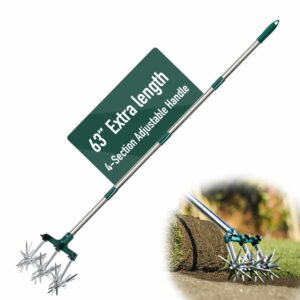Should you equity-release?
It involves releasing money from your home while you’re still living there
Are you over 55, a homeowner, and finding it challenging to manage your finances or hoping for a more secure retirement? Equity release might be a viable option, as over 25,000 households opted for it in 2023. However, it’s important to understand that equity release can have long-term effects on your home and is a costly method to access funds. This guide will walk you through the essential factors to take into account.
Always consider downsizing first
Considering equity release? It’s a significant decision that warrants careful thought. Before jumping into it, take a moment to explore whether downsizing your property might be a viable alternative.
If you can sell your current property and transition to a smaller one, you could benefit from the extra cash generated by the sale. Additionally, a new home might better suit your evolving needs, such as having fewer stairs or none at all. For comprehensive details and advice on the home-selling process, check out our guide on Selling Your Home.
If downsizing is right for you, don’t put it off.
People in their 60s often say to me: “I’ll do it in a few years.”
A few years later it’s: “Not yet.”
And after that it’s: “We’re now too old to leave.”
If downsizing seems like the right choice for you, it’s wise to consider acting sooner rather than later. However, if you’ve spent many years in your current home and have established a strong network of friends in the area, don’t overlook the personal and social ramifications of moving, especially if you have to relocate outside your community due to downsizing.
Additionally, bear in mind that the financial implications can be substantial, including agent fees and moving expenses. Therefore, you will need sufficient funds to cover these costs upfront. For more detailed information on what’s involved in moving, refer to our Moving Home Checklist guide.
If, after careful consideration, you determine that downsizing isn’t the best option for you, exploring equity release could be a viable alternative.
What is equity release and how does it work?
Equity release offers a way to tap into the value of your property and convert it into cash. Available through various plans, this process allows those aged 55 and above to access—or ‘release’—the cash value embedded in their homes, even if their mortgage isn’t fully paid off.
Typically, you have the option to receive the released funds either as a single lump sum, in smaller installments over time (known as drawdown), or a mix of both. In 2023 alone, over £2.6 billion in property wealth was converted into cash through equity release.
The most prevalent type of equity release involves a mortgage that remains unpaid until your death. If you have no heirs to pass your assets on to, this can be a viable, albeit costly, way to access funds. However, if you do have beneficiaries, equity release typically means they will receive a reduced inheritance. Ultimately, it’s your money, so it’s important to prioritize your own financial comfort.
There are three main categories of products designed to unlock cash:
1. Lifetime mortgages – for those aged 55+
This is the most widely used type of equity release. It involves borrowing a portion of your home’s value with either a fixed or capped interest rate.
You have the option to receive the funds in a single lump sum or in smaller increments as needed, a process known as drawdown. With the drawdown method, interest is only applied to the money you’ve withdrawn, not to the remaining amount that is still available.
In both types of lifetime mortgages, if you do not make repayments, the interest can accumulate quickly as the total debt increases. However, most lifetime mortgages today offer the flexibility to make repayments, whether towards the capital or just the interest, helping to lower the overall cost. Typically, there is a limit on how much you can overpay, usually around 10% of the loan amount per year.
A lifetime mortgage differs from a standard mortgage. If you’re interested in exploring standard mortgage options, take a look at our guide to finding affordable mortgages for useful advice.
2. Home reversion plans – for those aged 60+
Home reversion plans, though less common than lifetime mortgages, offer an alternative where a provider gives you a tax-free lump sum in exchange for a percentage of your home’s value at a discounted rate. You then reside in the property rent-free until your passing. Upon the sale of the property, the proceeds are divided according to the shares owned by you and the provider. Consequently, if property values increase significantly, the amount the provider receives will also grow.
For instance, if you sell a 40% share of a £400,000 home for a lump sum of £80,000, you’re receiving this money at a considerable discount compared to the £160,000 market value of that share. This discount reflects the provider’s wait time to recoup their investment. Later, when your home is sold for £500,000 after your passing, the provider would be entitled to £200,000, representing 40% of the sale price.
In summary, home reversion plans are more advantageous in a stable property market and less favorable if property values increase dramatically.
3. Retirement interest-only mortgages (RIOs) – similar to lifetime mortgages but you MUST make monthly payments
Although RIOs aren’t technically classified as equity release, they share similarities in that they provide a lump sum of cash secured against the value of your home. If you have a reliable monthly income, RIOs can be an effective way to unlock equity from your property, even if you already have a mortgage.
Similar to a lifetime mortgage, RIOs are typically available only to individuals aged 55 and over. They also involve paying interest on the borrowed amount. However, unlike a lifetime mortgage where interest payments are often optional, with a RIO, you are required to pay off the interest each month. Additionally, you usually have the option to make extra repayments if desired.
Provided you can manage the repayments, a RIO can be more cost-effective than a lifetime mortgage because you are paying interest only on the original loan amount. In contrast, with a lifetime mortgage, interest compounds monthly unless you opt to make monthly payments, which would then make it as affordable as a RIO.
Since RIOs require regular repayments, you’ll need to pass affordability assessments to qualify. RIOs can also be used to replace existing mortgages, such as standard interest-only mortgages. The amount you can borrow generally depends on factors like your age, property type, and the specific RIO product. Borrowing is usually capped at around 60% of the loan-to-value (LTV) ratio, a limit that also applies to lifetime mortgages.
Although RIOs often offer the option to transfer the mortgage to a new property (known as porting), they lack downsizing protection, unlike many lifetime mortgages. This means you could face early repayment charges if the new property does not meet the lender’s criteria.
What are my options if I’m under 55?
Equity release is accessible exclusively to individuals aged 55 and above. If you’re approaching 55, you might feel inclined to wait until you reach this age.
However, for homeowners under 55 who need immediate financial assistance, it’s advisable to consult a mortgage broker to explore the option of remortgaging, or reach out to a financial advisor if your situation is particularly complex.
Remortgaging can help reduce your monthly mortgage payments, and in some cases, you might be able to obtain additional funds against your property. Recently, many mortgage lenders have raised their maximum age limits for mortgage applications, so if you’re an older homeowner but not interested in equity release, don’t assume you would automatically be ineligible for a mortgage.
How much does equity release cost?
Interest rates for lifetime mortgages currently start at approximately 5.5%, with some of the more expensive options reaching up to 8%. This is considerably higher compared to the best rates available on standard residential mortgages.
When choosing the right equity release option for your needs, keep in mind that the high cost your estate will need to settle arises if you opt not to make monthly payments to reduce the debt. In this case, the interest continues to accrue and compound.
For instance, if you borrow £20,000 at age 60 with an interest rate of 6%, the debt approximately doubles every 12 years. Therefore, if you live to 72, you would owe about £40,000; and if you live to 84, the amount owed would be around £80,000.
In addition to the interest charges, you’ll need to cover various fees, which can range between £1,500 and £3,000. These fees typically include costs for arrangement, valuation, legal work, and surveying.
Quick equity release tips and pitfalls to be aware of
If you’ve read all the above and think equity release could be right for you, make sure you have a read of these quick tips before doing anything:
1. Don’t borrow all you need in one go
The earlier you take out a loan, the higher the cost will be, as interest will have more time to accumulate. Therefore, it’s wise to borrow only what is necessary at the moment and delay further borrowing for as long as possible.
For instance, if you anticipate needing £40,000 from your home over the next 20 years, it’s better to withdraw only the amount you need now and postpone accessing additional funds until absolutely necessary. Drawdown lifetime mortgages are designed to simplify this process.
2. You’ll need professional advice BEFORE you equity release
Before you pursue a lifetime mortgage or home reversion plan, it’s essential to consult with a certified equity release adviser. This step is mandated by the Financial Conduct Authority.
A skilled adviser can evaluate various equity release options available in the market, ensuring you receive personalized recommendations that suit your unique situation. It’s also advisable to choose an adviser who is a member of the Equity Release Council (details on the Equity Release Council are provided below).
You can search for qualified advisers on both the Equity Release Council and Unbiased.co.uk* websites. Before selecting an adviser, ask:
– Do you offer a free consultation? It won’t necessarily, but it’s worth asking.
– Do you charge a fee? If so, how much? Typically advisor fees will set you back between £1,000 and £2,000, though there are some that don’t charge a fee at all.
– Are you whole-of-market / can you access equity release deals from all lenders? You want a ‘yes’ answer. There are some advisors who are tied to a limited panel of lenders, or even tied to a specific lender.
Please keep in mind that most standard financial advisers are not equipped to provide guidance on equity release unless they have specific qualifications in this area.
If you believe that remortgaging might be a preferable choice, it’s advisable to consult a mortgage broker. However, remember that general mortgage brokers typically do not offer advice on equity release.
Likewise, if you are contemplating a retirement interest-only mortgage, consult a mortgage broker. It’s important to verify in advance whether the broker offers advice on RIOs, as not all brokers do.
3. If you do opt for equity release, make sure it’s from a provider approved by the Equity Release Council
The Equity Release Council (ERC) is dedicated to upholding the highest standards of service for borrowers by ensuring that lenders and advisers adhere to rigorous guidelines. Most lenders, who are members of the ERC, proudly display the TrustMark (shown on the right) and their equity release offers:
– Come with a ‘no negative equity guarantee’. Meaning your estate will never owe more than your home is worth.
– Charge a fixed (or capped) rate of interest. So what you’re charged each month on a lifetime mortgage should remain the same.
– Allow you to make repayments. Enabling you to reduce the overall cost of equity releasing (if you can afford and want to make repayments).
– Are portable. This means you can later move home and take your equity release product with you (subject to the property being suitable to the lender).
If you’re thinking about committing to a lifetime mortgage or a home reversion plan, it’s crucial to choose a lender that is a member of the Equity Release Council (ERC).
Additionally, you’ll need to seek legal counsel from a solicitor who can help you grasp the full details and consequences of equity release. At least one meeting with your solicitor will need to be conducted in person.
In addition to lenders, solicitors and financial advisers may also be ERC members. To locate a member of the ERC, check the appropriate section on their website.
4. Do involve your loved ones in the process
Since an equity release plan only requires repayment after your death or if you move into long-term care, your family will likely be responsible for settling the final balance. To avoid any surprises, it’s wise to involve your loved ones during the application process.
We often hear from readers who are distressed because they were unaware of the repayment costs associated with a deceased relative’s equity release plan, or they didn’t even know their loved one had such a plan. By including family members from the beginning, you can help ensure they aren’t caught off guard during a challenging period.
5. Be aware that equity release can affect your benefits
Holding cash instead of property can influence the benefits you qualify for, such as pension credit or universal credit. Therefore, if you are eligible for these benefits, it’s important to assess how releasing equity might affect them. If you’re uncertain, consult an equity release adviser to evaluate the potential impact.
 Swan SD6060N 1.5 litre Stainless Steel Fryer with Viewing Window, Non-Stick Coating for Easy Cleaning and Adjustable Thermostat with Indicator Light, Detachable Basket Handle, 900W, Silver
Swan SD6060N 1.5 litre Stainless Steel Fryer with Viewing Window, Non-Stick Coating for Easy Cleaning and Adjustable Thermostat with Indicator Light, Detachable Basket Handle, 900W, Silver  Sage - The Custom Loaf - Bread Maker, Brushed Stainless Steel
Sage - The Custom Loaf - Bread Maker, Brushed Stainless Steel  Russell Hobbs Kettle, retro red, 1.7 l, 2400 W, quick cooking function, water temperature display in retro design, filling level marking, optimised pouring spout, vintage 21670-70
Russell Hobbs Kettle, retro red, 1.7 l, 2400 W, quick cooking function, water temperature display in retro design, filling level marking, optimised pouring spout, vintage 21670-70  Sensio Home Personal Blender Smoothie Maker - BPA Free 1L Jar & 600ml Portable Sports Bottle, Electric Blender for Fruit, Vegetables, Protein Shakes, Crush Ice & Frozen Fruit, 2 Speed + Pulse 350W
Sensio Home Personal Blender Smoothie Maker - BPA Free 1L Jar & 600ml Portable Sports Bottle, Electric Blender for Fruit, Vegetables, Protein Shakes, Crush Ice & Frozen Fruit, 2 Speed + Pulse 350W  Russell Hobbs Honeycomb Electric 1.7L Cordless Kettle (Fast Boil 3KW, Grey premium plastic, matt & high gloss finish, Removable washable anti-scale filter, Push button lid, Perfect pour spout) 26053
Russell Hobbs Honeycomb Electric 1.7L Cordless Kettle (Fast Boil 3KW, Grey premium plastic, matt & high gloss finish, Removable washable anti-scale filter, Push button lid, Perfect pour spout) 26053  Rolling Kitchen Island Cart with Solid Wood Countertop Spice Rack and Wheels Portable Kitchen Cart (1 Piece)
Rolling Kitchen Island Cart with Solid Wood Countertop Spice Rack and Wheels Portable Kitchen Cart (1 Piece)  150FT Expandable Flexible Garden Hose with 7 Setting Professional Water Spray Nozzle
150FT Expandable Flexible Garden Hose with 7 Setting Professional Water Spray Nozzle  Swan SK14610FUS Nordic Cordless Jug Kettle with Fast Boil Technology, Overheat Protection, Soft Touch Handle, 1.7L, 3KW, Fuchsia Rose, Fusia
Swan SK14610FUS Nordic Cordless Jug Kettle with Fast Boil Technology, Overheat Protection, Soft Touch Handle, 1.7L, 3KW, Fuchsia Rose, Fusia  Salter EK3131 Espressimo Coffee Machine – 4-Shot Espresso Maker, Milk Frothing Wand, Includes 240 ml Glass Carafe, Barista Style Latte And Cappuccino, 5-Bar Pressure, Stainless Steel Filter, 870W
Salter EK3131 Espressimo Coffee Machine – 4-Shot Espresso Maker, Milk Frothing Wand, Includes 240 ml Glass Carafe, Barista Style Latte And Cappuccino, 5-Bar Pressure, Stainless Steel Filter, 870W  Revel CCM104 Wet and Dry Grinder, Plastic, White/Green
Revel CCM104 Wet and Dry Grinder, Plastic, White/Green  Rotary Cultivator Set, 25"-63" Adjustable Gardening Rotary Tiller and Hand-Held Garden Cultivator Tool with Steel Detachable Tines, Reseeding Grass or Soil Mixing
Rotary Cultivator Set, 25"-63" Adjustable Gardening Rotary Tiller and Hand-Held Garden Cultivator Tool with Steel Detachable Tines, Reseeding Grass or Soil Mixing  Rainberg 122 x 38cm Folding Ironing Board with Jumbo Iron Rest, Adjustable Height Up To 93cm, Foldable & Collapsible Ironing Table (Black)
Rainberg 122 x 38cm Folding Ironing Board with Jumbo Iron Rest, Adjustable Height Up To 93cm, Foldable & Collapsible Ironing Table (Black)  AOUXIN 3 Piece Rattan Garden Furniture Set, Outdoor Sectional Sofa with Coffee Table, Black Wicker, White Cushions
AOUXIN 3 Piece Rattan Garden Furniture Set, Outdoor Sectional Sofa with Coffee Table, Black Wicker, White Cushions  Basics Coffee Table with Drawer, Rectangular, Waxed Solid Pine Wood, Traditional, Rustic, 56 x 94 x 45
Basics Coffee Table with Drawer, Rectangular, Waxed Solid Pine Wood, Traditional, Rustic, 56 x 94 x 45